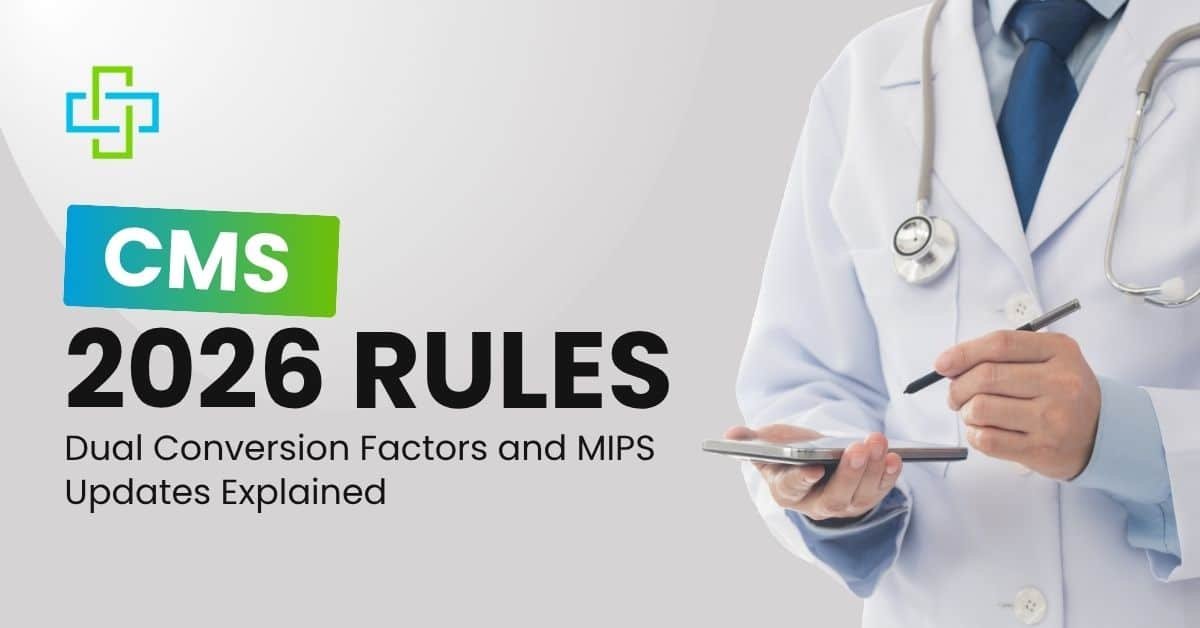Medicare MVP providers face constant changes in reporting requirements. The Centers for Medicare & Medicaid Services introduced Medicare MVP as a new way to meet quality reporting standards. If you’re feeling overwhelmed by traditional reporting methods, understanding this pathway could make your life easier.
The Medicare MVP system launched in 2023 and gives healthcare providers a different option for meeting their requirements. Instead of tracking dozens of unrelated measures, you can focus on specific pathways that match what you actually do in your practice. CMS designed these pathways to reduce the administrative headaches that come with quality reporting.
What Is Medicare MVP?
MIPS Value Pathways provide an updated reporting structure for the Merit-based Incentive Payment System. Think of it as a more focused version of traditional quality reporting. Rather than choosing random measures from a massive list, you pick from a set that is made for your specialty.
The system works through four main categories: Quality, Cost, Promoting Interoperability, and Improvement Activities. With MVPs, you’ll likely have fewer measures to report, and many are designed with a specific specialty or medical condition in mind. This targeted approach means you’re not wasting time on metrics that don’t apply to your patients.
How Medicare MVP is Different From Traditional Reporting?
Traditional MIPS lets you choose from hundreds of quality measures. That sounds flexible, but it often leads to picking measures based on ease rather than relevance. CMS has finalized a total of 21 MVPs for the 2025 performance year, covering specialties from emergency medicine to urology to ophthalmology.
You must select 4 quality measures from your MVP and meet the case minimum (at least 20 denominator eligible instances) for each measure. At least one needs to be an outcome measure. If your specialty doesn’t have applicable outcome measures, you can use a high-priority measure instead.
The Cost category works differently. You don’t submit anything yourself. CMS qualified registry uses your Medicare MVP claims data to calculate how you perform on cost measures. If you don’t meet the minimum case requirements, they’ll reweight that category to zero.
Who Can Report Through MVPs 2026?
MVPs can be reported by individual MIPS eligible clinicians, single-specialty groups, multi-specialty groups, or an APM Entity. You also have the option to report as a subgroup, which wasn’t possible under traditional MIPS.
Medicare MVP Part B claims determine your specialty type. A single-specialty group consists of one specialty type as determined by CMS using Medicare Part B claims, and a multi-specialty group consists of 2 or more specialty types.
Starting in 2026, multi-specialty groups must form subgroups to report through MIPS MVPs. For now, subgroup reporting remains voluntary through 2026. This gives practices time to adjust their workflows before the requirement kicks in.
Looking at the 21 Available Pathways
CMS offers pathways for various specialties. The updated urology MVP, launched in January 2025, includes 14 quality measures, 17 improvement activities, and 3 cost measures, all ready for use. Other pathways cover cardiology, emergency medicine, dermatology, gastroenterology, pulmonology, and surgical care.
Each MVP contains measures specifically relevant to that area of medicine. For example, orthopedic providers working with lower extremity joint repairs have measures focused on joint outcomes and recovery. Neurologists have pathways addressing both episodic and neurodegenerative conditions.
The pathway you choose should align with the majority of your practice. If you’re a multi-specialty group, subgroup reporting lets different specialties within your organization report through their relevant pathways.
What Makes Medicare MVP Different?
The foundational layer is important. The MVP will include a core layer made up of Promoting Interoperability and administrative claims-based quality measures that focus on population health. This layer applies across all pathways, making sure basic standards are maintained while specialty-specific measures address your unique patient population.
Population health measures track things like hospital readmission rates and admission rates for patients with multiple chronic conditions. CMS calculates these measures using claims data at the group level. If you report as a subgroup, you get assigned your affiliated group’s score for these measures.
The Promoting Interoperability category remains specialty-agnostic. You must submit the required PI measures (the same as under Traditional MIPS). However, you might qualify for exemptions based on special statuses like practicing in a rural area or working primarily in hospital settings.
Working With a Reporting Company
The overcomplication of quality reporting has created a whole industry of companies specializing in MIPS assistance. These consulting services help interpret CMS guidelines along with measures according to your specialty. They can save you significant time and reduce the risk of reporting errors.
A good MIPS reporting company handles measure selection, data collection, performance monitoring, and final submission. They stay current on regulatory changes so you don’t have to become an expert in CMS policy. Many also provide quarterly performance reports showing where you stand and what adjustments might improve your score.
Companies often specialize in specific EHR systems or specialties. When choosing a partner, look for someone with experience in your area of medicine and familiarity with your software. The right match can mean the difference between struggling through reporting and having a smooth, successful submission.
Calculating Your Score and Payment Adjustment
Your final MIPS score determines your Medicare MVP payment adjustment. Score below 75 points and you face up to a 9% payment reduction. Hit exactly 75 and you get neutral reimbursement with no change. Score above 75 and you receive positive payment adjustments.
The four categories carry different weights in your score. Quality typically carries the most weight, followed by Cost, Improvement Activities, and Promoting Interoperability. MIPS registry adjusts these weights periodically, so check current requirements when planning your reporting strategy.
MVP scoring follows the same basic framework as traditional MIPS. The difference lies in which measures count toward your score. Since you’re working from a specialty-focused list, you’re more likely to perform well on measures that actually reflect your practice patterns.
Common Mistakes That You Should Avoid
Don’t wait until late in the year to start tracking. MIPS quality measures need at least 20 cases per measure. Depending on your patient volume, you might need most of the year to hit those minimums. Starting in January gives you the full performance period to collect data.
Watch out for measure exclusions. Some quality measures exclude certain patient types or situations. Understanding exclusions prevents wasting effort on cases that won’t count toward your score. Your EHR or registry partner should help identify which encounters qualify for each measure.
Missing the registration deadline is a serious error. Without proper registration, you can’t submit data through a Medicare MVP. You’d fall back to traditional MIPS or face the negative payment adjustment for not reporting at all. Set calendar reminders well before deadlines to avoid this problem.
What is the Role of Technology in Medicare MVP?
Most practices use their EHR systems to track quality measures. Modern EHRs have built-in reporting tools that flag eligible encounters and track and measure progress in real time. These dashboards show where you stand on case minimums and help identify gaps in your reporting.
Qualified Clinical Data Registries offer another option. These registries specialize in collecting and submitting quality data. They often provide specialty-specific measures beyond what standard EHRs track. If your specialty has a registry, it might offer measures particularly relevant to your patient population.
Your data collection tools should work smoothly with your clinical workflow. Clunky systems that require duplicate data entry rarely get used consistently. Look for solutions that pull data automatically from your existing documentation.
The Bottom Line of Medicare MVP Participation
Beyond avoiding penalties, participation can improve your practice. When you focus on meaningful quality measures, you often identify opportunities for better patient outcomes. Regular performance monitoring helps you spot patterns and adjust care processes.
The financial incentives can be substantial. Practices scoring above 75 receive positive payment adjustments on all their Medicare MVP Part B services. For a practice billing millions in Medicare MVP services annually, even a few percentage points make a difference.
Patient satisfaction often improves when practices focus on quality metrics. Measures like care coordination, patient education, and follow-up care directly impact the patient experience. Getting recognized for quality work can also help with marketing and attracting new patients.




